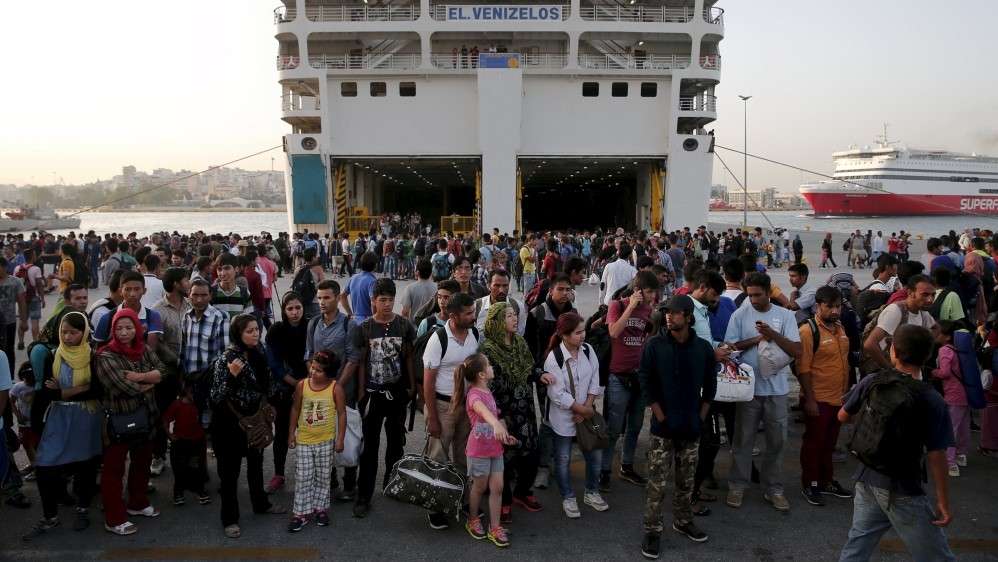European Refugee Crisis: The difficulties of migration
Images from the Syrian refugee crisis have gained international attention in recent weeks. From migrant boats capsizing off the Libyan coast to the recent images of a Syrian boy washing ashore in Turkey. The high number of refugees and migrants this year has made it one of the largest waves of migration since World War II. However, thousands are still facing difficulties seeking refuge and asylum, particularly in European countries. Even with these problems, the European Union is doing the best that they can to accommodate the continuing crisis.
Most of these refugees have been displaced and are fleeing from the ongoing civil war in Syria. Others have been displaced by the Islamic State in Iraq or threatened by corrupt militias. Some have lived through hardships and are seeking a better life with economic opportunities. All of these people have one desire in common: to be free from war and find a better opportunity for themselves and their families. Bordering countries such as Jordan and Turkey have taken in the most refugees but do not have the capacity to withstand the numbers. Gulf countries have been criticized for not accepting more refugees that they could accommodate, which could stem from historical and religious indifference. The United States has come under international pressure to take in more refugees, but concerns for national security has proven to be more important than the interest in helping others. Europe is under more pressure to accommodate because it has the most funding and abilities to assist these refugees. “Europe is wealthy continent that could manage the numbers of people coming in.”
Refugees are willing to sell all their worldly possessions in order to travel to Europe, whether it is the intense journey through Europe on foot, or a boat ride through the Mediterranean from Turkey to Greece. In order to first receive protection and later asylum, refugees must prove that they are fleeing from war. But if they run out of money or cannot show any identification, many of these refugees can only wait until their nationality is established. Refugees end up in limbo as an internationally displaced person waiting for an official refugee visa. States are bound by non-refoulement, meaning refugees cannot be sent back to their country of origin should it continue to threaten their life or freedom. This means that regardless of lack of asylum or proof of nationality, once a refugee has fled, there is no turning back.
Non-refoulement has become the main problem and frustration that many European countries face as thousands of refugees enter their country. Germany has lead by example, with Germans wholeheartedly welcoming refugees and more than 98,000 applicants for asylum. This comes as no surprise as Germany is one of the most prosperous countries in the EU. However, Germany’s willingness to accept refugees has led to unreal expectations for other countries in Europe to accept refugees. This is due to the fact that not all countries have the same economic stability as Germany does in order to sustain a mass influx of refugees. This has led to backlash from countries opposing this idea of obligation and infringement of sovereignty. Violence has occurred between local police and refugees in Greece as they continue to move forward from the debt crisis that transpired over the summer. Denmark openly claims their restrictions and lack of aid so that refugees are deterred from seeking asylum. Hungary is in the process of building a fence on their border with Serbia to prevent the passage of refugees as well as illegal immigrants. While there is optimism with refugees working in the state of their asylum, the resettlement process will still cost millions. Inviting and accommodating this influx of refugees is a humanitarian cause but immigration discrimination and lack of funding continues to make the process difficult. Some migrants are even converting from Islam to Christianity to ensure their stay in the country. Immigrants in the 20th century looked at the “American Dream” when immigrating to the United States. Even if the conflict ends in Syria and Iraq or if better economic prosperity reaches other countries, it seems that refugees will now look to the “European Dream.”
Photo Source: Al Jazeera
Sarah Valero is the Social Media Manager for the Journal of Diplomacy. She is a second year graduate student at Seton Hall’s School of Diplomacy and International Relations specializing in International Law/ Human Rights and the Asia Region.

